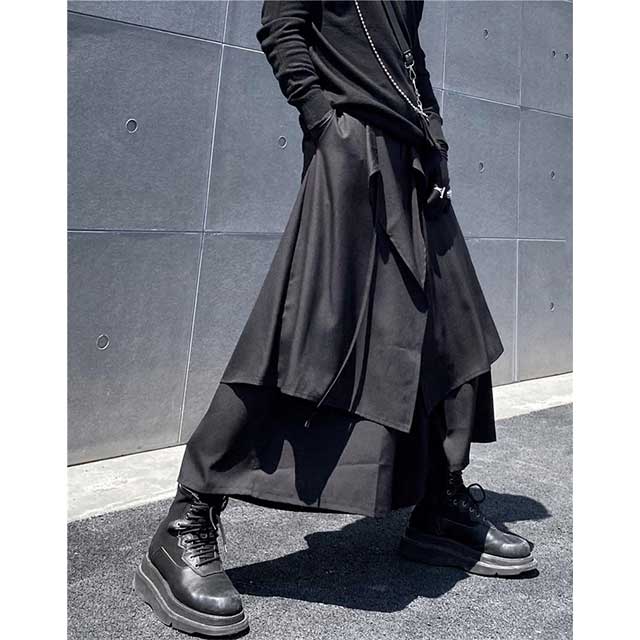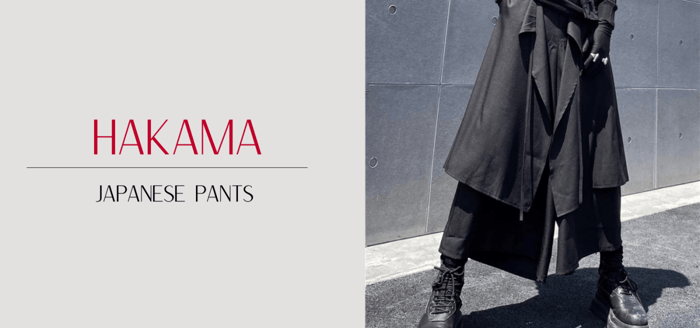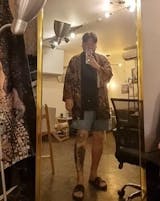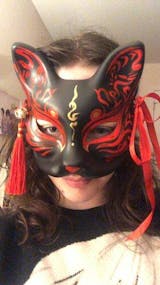Hakama pants are a traditional Japanese clothing item that dates back to the 12th century. With the wide, billowing legs and pleated design, the hakama are a striking garment, traditionally for men, that both genders wear today. If you're interested in trying out this distinctive piece of clothing, here's everything you need to know about hakama pants!

Men's Hakama Style Pants

$89.99
$104.90
Stride with Samurai Swagger: Hakama Pants Take Streetwear by Storm Step into the intersection of tradition and modern edge with these Hakama Style Pants, a staple piece in the dynamic world of Japanese streetwear. These pants reimagine the classic lines… read more
Men's Hakama Style Pants

$89.99
$104.90
Stride with Samurai Swagger: Hakama Pants Take Streetwear by Storm Step into the intersection of tradition and modern edge with these Hakama Style Pants, a staple piece in the dynamic world of Japanese streetwear. These pants reimagine the classic lines… read more
What Are Hakama?
Hakama pants are wide-legged trousers, tied at the waist, that reach the ankle. Members of Japan's higher classes typically wore them with a short kimono called a kimonoshita tucked into them. With a divided flap-like panel in the front and back, they are sometimes called "divided skirts." Traditional pieces usually were of natural fabric like silk, wool, and cotton.
Modern hakama, meanwhile, are frequently of synthetic material to make it easier to hold pleats — a crucial element of the hakama look.
While hakama come in many colors, it's easier to find white, black, gray, and navy hues with solid or striped patterns.
Types of Hakama Pants
You can find two main types of hakama pants:
· the andon hakama (lantern hakama)
· the umanori hakama (horse-riding hakama)
Japanese warriors typically wore the umanori or samurai hakama to protect their legs while horse-riding. This style has a split in the center of each leg that allows for a wider range of movement.
Many martial arts (aikido, kendo, and iaido) practitioners today still use this type of hakama for training and competitions.
The andon hakama don't have these splits and look more like a long skirt. You will often see them at traditional Japanese weddings, funerals, graduation ceremonies, and other formal events. Some calligraphy and tea ceremony lessons also require andon hakama.
Pleats
One of the most distinctive features of these Japanese pants is the pleats. Hakama pants have seven pleats, each with a symbolic meaning, on each side — five in the front, two in the back.
The five front pleats represent justice, humanity, belief, courtesy, and intelligence. Historical accounts suggest that these meanings come from "Gorin Gojo," the essential Confucian principles and values of Bushido, the samurai code. These pleats are also naturally uneven, a prime example of the Japanese aesthetic of asymmetry.
The other two pleats stand for filial piety and loyalty. Like the other five meanings, these represent essential samurai values.
Other Components
Four straps called himo secure hakama garments in place during wear. Two long himo attach to the front, while two shorter himo connect in the back.
Hakama pants also have a trapezoidal backplate called a koshi-ita, from which the two back pleats begin. Right below, you might find a spoon-shaped hakama dome or hera tucked into the Himo at the rear. This component also helps secure a hakama during wear and gives it a more polished look.
Women's Hakama Pants
Historically, women sensei (professors or school teachers) began wearing hakama pants with a traditional kimono a century ago while teaching, just as male academics did. Today women academics, as well as female graduates, wear them primarily during graduation ceremonies.
Otherwise, women wear these garments only rarely, such as during Shinto ceremonies or when participating in some martial arts.
Hakama for women differ in form and function from those worn by men. First, women wear their hakama higher, just below the chest area, while men wear them at or below the waist. Women may also have small embroidered floral details or other embellishments on the body.
While formal male hakama use striped fabric, hakama for women usually have solid colors or graduating hues.
When To Wear Hakama Pants in Japan
If you're interested in wearing hakama pants, you should know a few things about how to wear them properly. Nowadays, you'll see people of all ages sporting hakama at festivals, tea ceremonies, Dojo training sessions, and Shinto weddings. When you want to wear hakama for a more formal occasion, it's best to pair them with solid-colored kimonos in white, black, or navy.
Don Your Hakama With a Light Cotton Summer Kimono or Warm Haori
Men also wear less formal patterns of hakama pants during their day-to-day activities with a yukata — a cotton summer kimono. During the colder months, they pair them with a heavier kimono like the nagoya or toshima. You can also add a haori — a short coat worn over the kimono — for extra warmth.
The Right Way To Wear a Hakama
First-time hakama wearers might find it tricky to put on this traditional clothing, but don't worry. Once you get the hang of it, it's not so challenging!
Here's a step-by-step guide:
· Start by donning your hakama pants. Ensure that you have each hole on the right leg. Then, pull the top hem until it sits just above your waist.
· Wrap the two front himo all the way around your back and then again to the front of the hakama. Cross the right himo under the left below the upper ridge, then draw both straps to the back of the cloth and tie them in a knot.
· Next, bring the two back himo to the front and cross them the same way as the front belts. Insert your koshi-ita with the clip you'll find behind the front himo's knots.
· Pull the right back Himo under the left and both front himo, tied in a knot using the left himo. Place the loosened ends of the back himo through all the belts on the side from the top. When you do it properly, the back of your hakama should hide these himo.
· Pair your hakama trousers with a formal kimono, yukata, or haori, depending on the occasion or season.
You can find plenty of helpful how-to videos online to make the process easier.
How to Make and Sew Japanese Hakama Pants
Hakama-style pants are not only fashionable but also relatively easy to create. If you have sewing skills, follow these steps to craft your own pair of hakama:
· Preparing the material. For fabric, you can choose the traditional stiff silk or go with the more modern heavy cotton, heavy polyester, or polyester-linen. Purchase your preferred fabric and pattern, launder the fabric, then cut off all hemmed or finished edges. Purchase matching thread.
· Make the ties. Cut three strips of four-inch wide cloth from the longest part of your fabric and sew two strips together to make one long strip. Then, turn both your long and short strips into tubes by folding over one long side, then the other, and sewing them together
· Cut the leg area. Cut your remaining fabric lengthwise along the fold. Then, fold both panels in half lengthwise with the unfinished edges facing you. Follow your pattern to cut a half-u shape on both pieces to make a crotch area.
· Form the pants. Place the pieces of cloth on top of each other and pin the inseams and side seams. Sew along these pinned areas, and then turn the piece inside out.
· Make the pleats. Fold and pin the fabric into four pleats, secure each pleat with pins, and sew along the top edge to keep them in place. Repeat the process for the other side.
· Attach the waist ties. Iron both ties and position them on the inside of each leg opening. Sew the longer tie on the waist side and the shorter one on the backside.
Traditional Hakama vs. Streetwear Style Hakama: What's the Difference?
Both women's and men's kimono hakama in Japan have evolved over time, with the traditional "stripes" version worn during formal occasions with a special kimonoshita.
Modern hakama pants have a more relaxed fit, and the fabric often contains various designs or sports minimalistic patterns. This version is excellent for summer outings, sleeping, or other casual activities.
One must-have item to pair with your hakama is a yukata kimono. The casual yukata kimono is lightweight, comfortable, and goes well with any pattern or color of hakama.
$64.90
Japanese Legacy, Streetwear Edge: Distinctive Hakama Trousers Step into a blend of tradition and contemporary style with our Hakama Style Pants, a modern-day tribute to the iconic Japanese Hakama. With roots deep in Japan's cultural heritage, these pants effortlessly bring… read moreLayer Hakama Style Pants

$69.90
Start Your Hakama Collection Today
Are you ready to start your own Japanese hakama collection? You can search and purchase some online, through a rental shop for kimonos, or at many stores in Japan.
Most black hakama for men come with a white shirt and a pair of tabi socks. A yukata or kimono with hakama pants is another popular set of clothes you can find in many establishments. The hakama's versatile design will enable you to wear it in many ways, so don't be afraid to experiment!






